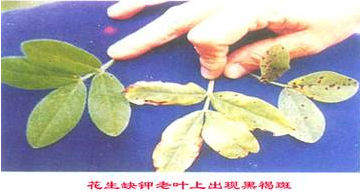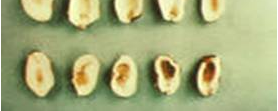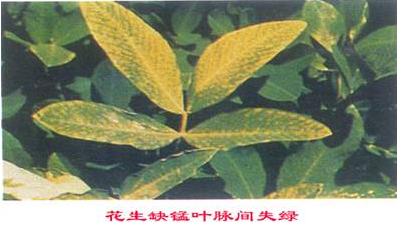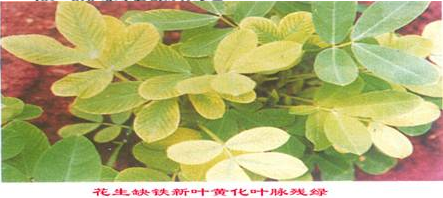Several common deficiency diseases of peanut
Time:2023-01-30 Follow:994
(1) Nitrogen deficiency
When the nitrogen is insufficient, the synthesis of protein, nucleic acid and chlorophyll is blocked, the tiller is reduced, the plant is short, the leaves are small and thin, the leaves are green and yellow, and even the old leaves and stem base appear red. If too much nitrogen and other nutrients are out of balance, the leaves will be large and thick, the leaves will be dark green or dark green, green and late maturing, and even the phenomenon of overgrowth will occur. Therefore, nitrogen nutrition must grow with other nutrients, which is an effective way to improve yield and quality.

Peanut leaves turn yellow due to nitrogen deficiency
(2) Phosphorus deficiency
Peanuts lack phosphorus, they grow slowly, have few secondary roots, dark green and dull leaves, and red lines appear on the lower leaves and stem base. In severe cases, the leaves wither and fall off.
(3) Potassium deficiency
Peanut is deficient in potassium. Its radiogenic effect is blocked and disordered, which affects the synthesis and transformation of carbohydrates. In the appearance of peanut plant, it starts from the lower old leaves, the leaves are dark green, the leaf margins turn yellow or brown, and then there are yellow spots between the veins, and gradually extend to the upper leaves, until the leaves wither and fall off. If potassium deficiency symptoms are found on the new leaves, it indicates that peanut potassium deficiency has reached a serious level.

(4) Calcium deficiency
The peanut is short of calcium, the germ of the seed becomes black, the pod development slows down, and the seed is not full. In serious cases, the plant turns yellow, the leaves fall off, the top dies, the root organ cannot form, the root system is not developed, and the number of empty fruit, blighted fruit, and single seed fruit increases.

Peanuts lack calcium, and the germ of seeds turns black
(5) Molybdenum deficiency
If the peanut is short of molybdenum, the root nodule is stunted, the nodule is small, the chlorine fixation capacity is weakened or nitrogen fixation is not available, the plant is short, the root system is not developed, the growth is inhibited, the leaf veins are green, the old leaves are thickened, and the waxy state is present.
(6) Manganese deficiency
In calcareous soil, the critical value of substitutive manganese is 2-3 ppm, and the critical value of reducing manganese is 100 ppm. Below these values, the peanut will suffer from manganese deficiency, and the mesophyll will turn yellow and white with mottled spots.

(7) Iron deficiency
Iron ion is one of the relatively fixed elements in peanut body, which usually exists in the form of macromolecular compounds and has little mobility. The iron in old leaves cannot be transferred to new leaves and cannot be reused. When iron deficiency occurs, the mesophyll and upper tender leaves lose green, the veins and lower old leaves remain green, and when iron deficiency is severe, the veins also lose green, and then yellow, and the upper tender leaves are all white. For a long time, brown spots and necrotic tissue appeared in the leaves until the leaves died.

-
Prev:Null




